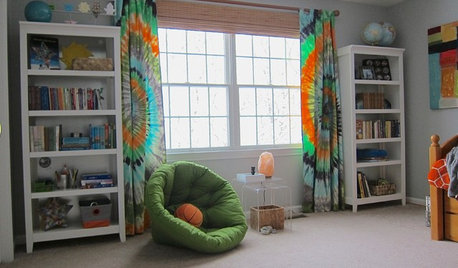Public space design
Saypoint zone 6 CT
17 years ago
Related Stories

COMMUNITYDesigned for Dogs: 5 Fantastic Dog Parks Across the U.S.
Let your favorite pooch run wild at one of these specially designed public spaces. Not close by? Learn how to start a dog park yourself
Full Story
SMALL SPACESTimeless Design Ideas for Small Spaces
Classic to inventive, these design moves use intelligence in the battle to live comfortably in a compact space
Full Story
KIDS’ SPACESThis Designer’s Client Was Her 10-Year-Old Son
What do you give a boy with a too-babyish bedroom when he’s approaching double digits? See for yourself
Full Story
HOMES AROUND THE WORLDWorld of Design: 11 Guys and Their Personality-Filled Man Spaces
Take a tour of very individual retreats designed by creative guys around the globe
Full Story
ARCHITECTUREDesign Workshop: How to Separate Space in an Open Floor Plan
Rooms within a room, partial walls, fabric dividers and open shelves create privacy and intimacy while keeping the connection
Full Story
FUN HOUZZSculptor Susan Wallace Turns Screen Doors Into Art
No more boring screen doors! Texas metal artist creates unique grillwork for doors, windows and public spaces
Full Story
DECORATING GUIDESMidcentury-Modern Family Home Gets a Retro Refresh
A makeover of this home’s public spaces honors its original style and ties together its rooms
Full Story
HISTORIC HOMESMust-Know Modern Homes: Mies van der Rohe's Villa Tugendhat
Visit a 1930 masterpiece of modern design in the Czech Republic, newly restored and open to the public
Full Story
FRANK LLOYD WRIGHTStep Inside a Frank Lloyd Wright House Saved From Demolition
The historic Phoenix property is now part of the architect’s school at Taliesin, where it will be used as a design lab
Full Story
DESIGNER SHOWCASES20 Fantasyland Dining Room Designs That Delight
A wonder to behold, these incredible professionally designed rooms take everyday dining over the top
Full Story







Saypoint zone 6 CTOriginal Author
mad_gallica (z5 Eastern NY)
Related Discussions
Planters for public spaces
Q
WANTED: Seeds for public/community spaces (Hardy plants)
Q
Name/Location of LA Design Center Open to the Public???
Q
MB & Bath or more public space?
Q
reyesuela
annieinaustin
Saypoint zone 6 CTOriginal Author
laag
inkognito
reyesuela
laag
Cady
Saypoint zone 6 CTOriginal Author
Cady
mad_gallica (z5 Eastern NY)
annieinaustin
Brent_In_NoVA
mad_gallica (z5 Eastern NY)
Saypoint zone 6 CTOriginal Author
reyesuela
nandina
Saypoint zone 6 CTOriginal Author
reyesuela
barefootinct
reyesuela
annieinaustin
Brent_In_NoVA
creatrix
burntplants
reyesuela
laag
inkognito
Saypoint zone 6 CTOriginal Author
catkim
reyesuela
Saypoint zone 6 CTOriginal Author
wellspring
gardengal48 (PNW Z8/9)
reyesuela
laag
Saypoint zone 6 CTOriginal Author
reyesuela
inkognito
laag
maro
reyesuela
Saypoint zone 6 CTOriginal Author
laag
wellspring
reyesuela
barefootinct
laag